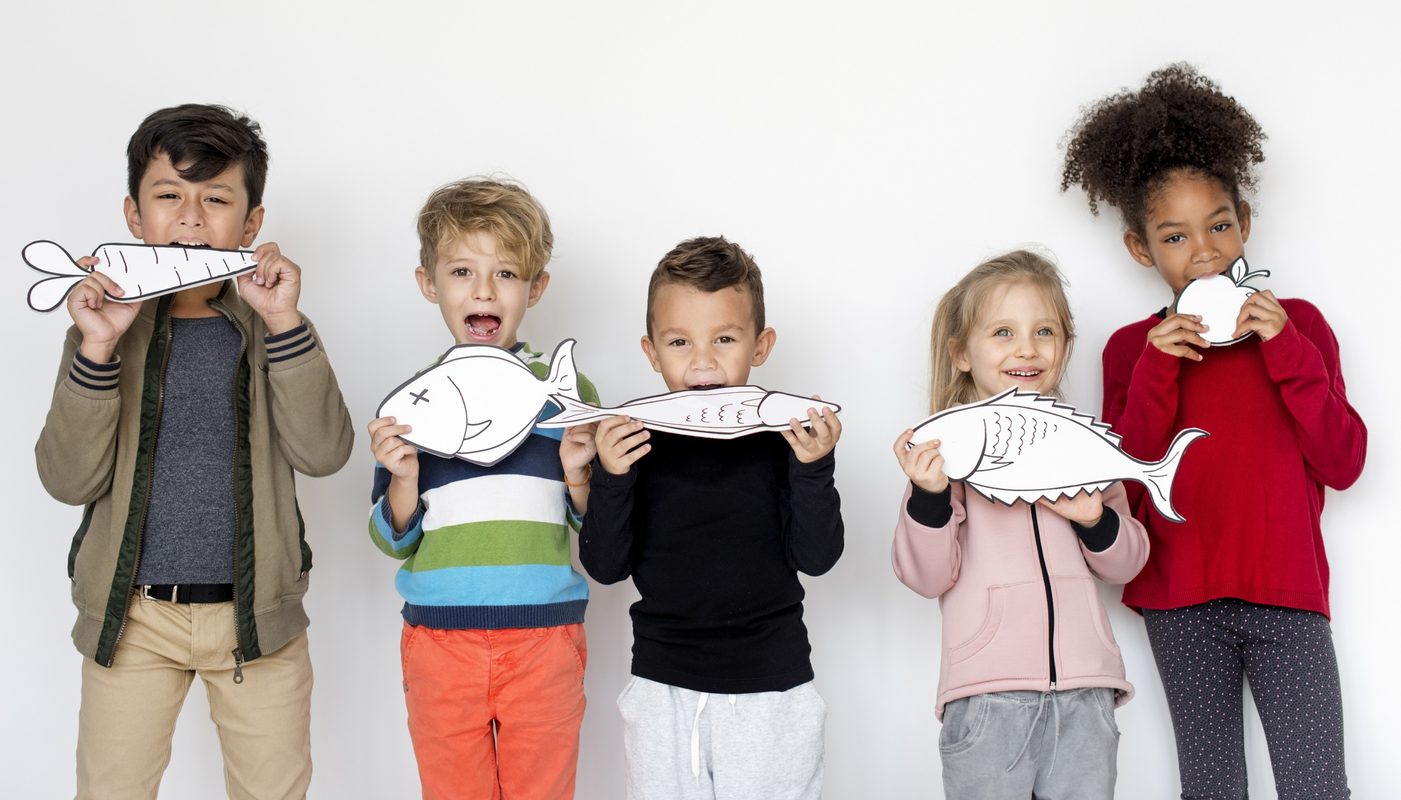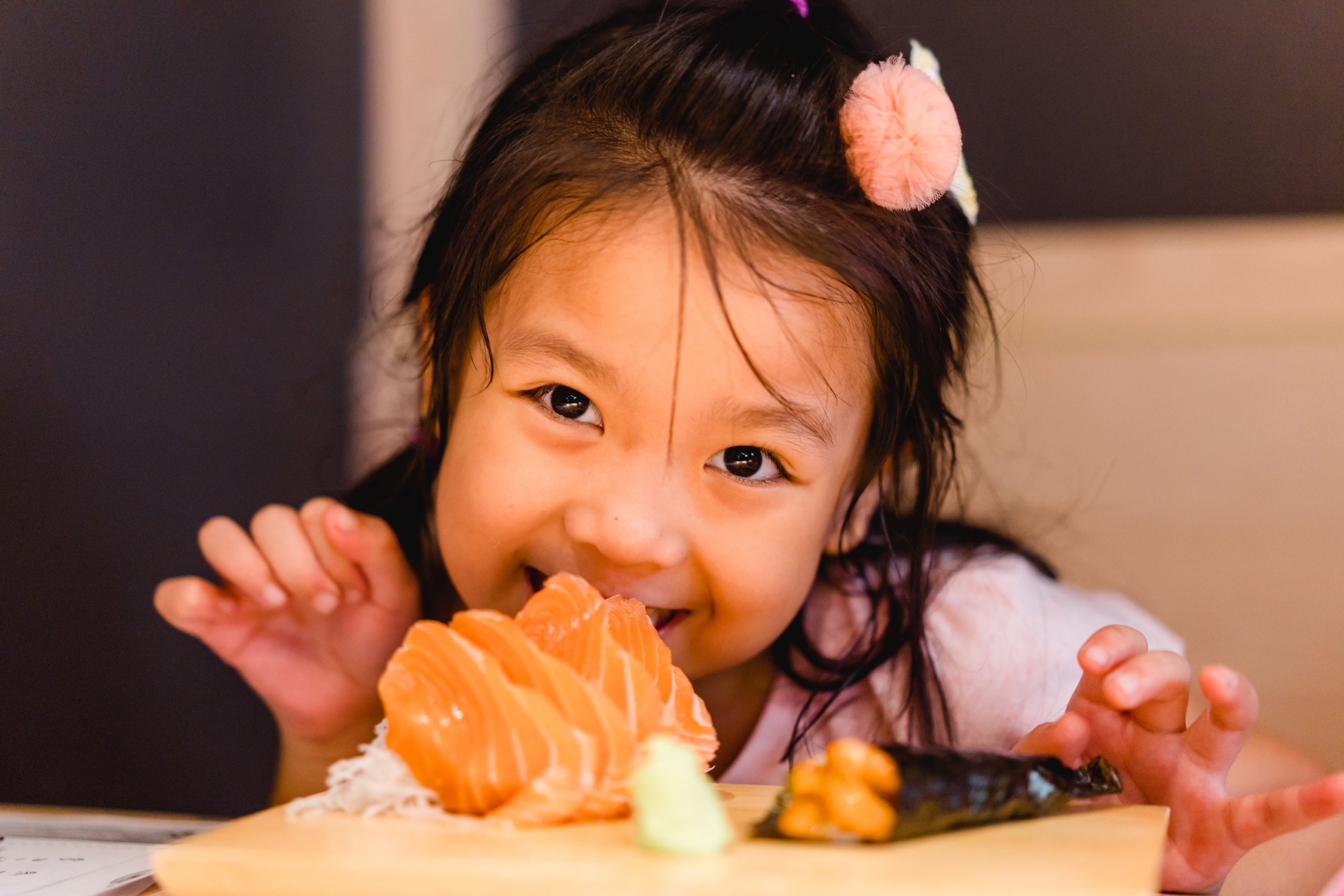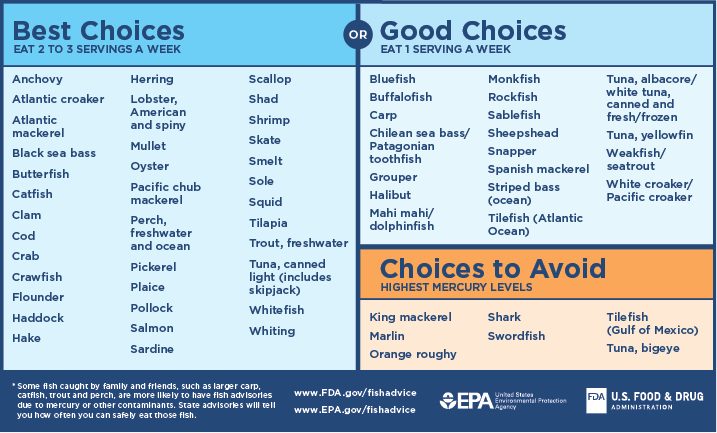One fish, two fish, red fish, blue fish. But which fish should your kiddo eat?
When you first think of it, fish seems like a healthy option for any age, but there are some lingering questions around mercury levels and other topics that may leave you wondering if fish is OK for toddlers to eat. How often? Which types? Let’s figure it all out.

Are fish-based foods healthy for toddlers?
In general, fish is high in protein and low in saturated fat. Fish also contains beneficial vitamins like D and B12 and iron and omega-3 fatty acids that are important for brain development. For these reasons, fish is a recommended healthy food for children by the FDA (Food and Drug Administration) and other agencies.
Whenever you’re feeding your toddler fast-food items, keep in mind: like with any food, the more processed it is, the more nutrition it loses. A chicken nugget doesn’t have the same nutritional value as a chicken breast because of the processing, preservatives, breading, etc. The same is true for fresh fish compared to a frozen and microwaved fish stick. That being said, fish sticks aren’t harmful to toddlers (unless they have an allergy or eat exclusively fish sticks!) and still certainly have more nutritional value than, say, candy.
However, just because fish is not harmful to toddlers, you should reconsider when it comes to sushi. Uncooked or undercooked fish carries a risk of harmful bacteria (though it is a relatively rare cause of illness). Even in places like Japan, where children and adults commonly eat sushi, parents usually wait until age 3 to introduce it.

Is eating fish necessary for healthy development?
The short answer is no. If you are vegetarian, allergic, or have a religious or ethical concern about eating fish, there are other high-protein baby food options which include other vitamins and healthy nutrients that are contained in fish. Vitamins D and B12 are specifically found in fish, so you may want to consider a multivitamin that contains those if you don’t eat fish. If you are raising your child vegetarian, be sure to feed them other sources of iron and protein.
How much fish should my toddler eat?
The FDA recommends feeding fish to children ages 2 and up, one to two times per week. They say that a serving for ages 2-3 is about one ounce. Keep in mind that the average fish stick is about half an ounce, meaning that a full serving for a 2-year-old is just two fish sticks.
Salmon is an exceptionally healthy fish that is low in mercury and high in DHA, which helps brain development, so if you are going to limit fish intake, make sure you’re getting the most bang for your buck.
You can introduce fish at the same time as other solid foods to your baby but watch for signs of allergies. After you feed fish to your child for the first time, do not feed it to them again for several days while you watch for any adverse reactions. If all is well, go ahead with a second time. Try to introduce just one new food at a time.

Which fish aren’t safe for toddlers?
There are trace amounts of mercury in many fish, but the issue is if it reaches too high a level. If you feed your child fish one to two times per week, as the FDA recommends, there is a lower chance of your toddler consuming too much mercury.
Avoid the fish below since they contain the highest amounts of mercury:
- Bigeye tuna
- King mackerel
- Marlin
- Orange roughy
- Shark
- Swordfish
- Tilefish (from the Gulf of Mexico)
As you can see in the chart above, several types of tuna, including bigeye, yellowfin, and albacore, are not “best choices” according to the FDA. Look specifically for “light” tuna (that is pink as opposed to white or yellow). Tuna is convenient, but sure to limit it due to mercury concerns.
Make chunks of canned tuna safe for little ones by chopping pieces small enough so as not to be a choking hazard. The same goes for shellfish or any other seafood—shrimp tails aren’t safe, for example.
Like with any food, providing a well-balanced and varied diet is important. Toddlers can get their nutrition from vegetables, grains, a well-rounded sampling of foods, and fish can be an excellent part of that equation.



